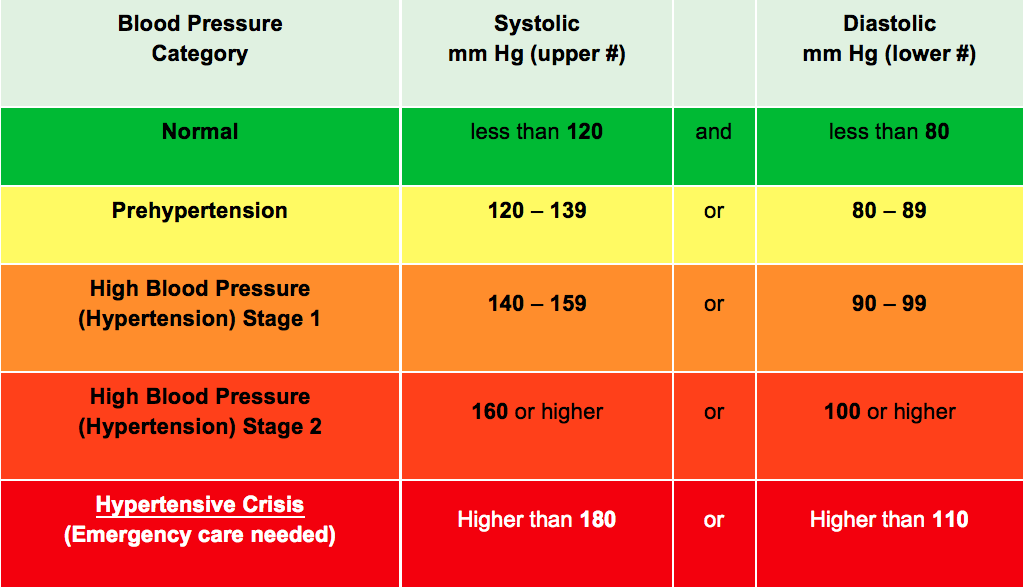Heart Health: Life-Saving Numbers to Know

The old adage “If you have your health, you have everything” is a reminder to all of us that we need to do all we can to stay healthy. Sadly, the message doesn’t usually hit home until after we’ve been diagnosed with a serious condition such as heart disease or diabetes. So, in the face of a dizzying array of exercise programs, vitamins, so-called miracle drugs, and special diets claiming to boost your health or cure disease, what do you really need to know to monitor and preserve your health?
Knowledge is Power: Know Your Numbers!
A limited set of numbers or measurements is all you need to track your general health status, especially your heart health. And since the Centers for Disease Control and Prevention (CDC) lists heart disease and stroke as the first and fifth leading causes of death in the United States, it makes sense to pay attention to these critical numbers so that you can make any necessary lifestyle adjustments. You may find it helpful to remember them using the alphabet: Think “three Bs and a C.”
Blood Pressure
According to the American Heart Association, approximately 78 million people in the U.S. have high blood pressure, or hypertension. Of those, one in five is unaware that they have this dangerous condition, which is often dubbed the “silent killer.” This is because high blood pressure typically causes no symptoms yet is associated with serious and potentially deadly consequences if left untreated, including heart attack, stroke, vision loss, and organ damage, especially kidney failure.
Monitoring Blood Pressure. Blood pressure is expressed as two numbers: the measure of the amount of force exerted by the blood against the walls of your arteries as your heart contracts (the systolic or top number) and then relaxes between beats (the diastolic or bottom number). Measurements are noninvasive and are taken using an arm cuff and a special measuring gauge.
While blood pressure readings can change from minute to minute according to your level of stress, exercise, caffeine intake, smoking, a change in posture, or sleep/awake cycles, a normal reading is 120/80 mm Hg or less for adults 20 or older. A diagnosis of high blood pressure is usually made if you have blood pressure readings that exceed 140/90 mm HG on three occasions. You may be at increased risk for hypertension – or prehypertension – if your systolic pressure is between 120 and 139 mm Hg or your diastolic pressure is between 80 and 89 mm Hg. The following chart details the different blood pressure categories as delineated by the American Heart Association.

Risk Factors. There are several risk factors for high blood pressure that you can’t control, including your age, gender, enthnicity, and heredity. However, numerous risk factors, including those listed below, can be addressed by adopting a healthier lifestyle.
- Excessive weight
- Smoking
- Non-active lifestyle
- Diabetes
- A diet high in fat or high in salt
- Heavy alcohol consumption
- Stress
Body Mass Index and Waist Circumference
Your body mass index (BMI) is a common measure that reflects the relationship between your height and weight. A simple BMI calculation helps to assess your percentage of body fat and determine whether you are at a healthy weight (see chart below). It is also useful for gauging your risk for chronic diseases, including heart disease, related to excess weight.
| BMI | |
| Underweight | Below 18.5 |
| Normal | 18.5–24.9 |
| Overweight | 25.0–29.9 |
| Obesity | 30.0 and Above |
Your waist circumference – measured at your natural waistline (above your hip bone and below the ribcage) – is also a powerful tool for determining health risks associated with overweight conditions. The risk increases with waist sizes greater than 35 inches in women and 40 inches in men. Indeed, one of the largest studies to date – the Nurses’ Health Study – revealed that even normal-weight women with excess abdominal fat (a waist circumference exceeding 35 inches) were at three times the risk for death from heart disease compared to women with smaller waists. Apparently, the fat surrounding the liver and other abdominal organs releases fatty acids, hormones, and inflammatory agents that can contribute to increased blood pressure, higher “bad” cholesterol and triglyceride levels, and increased blood glucose levels.
Blood Glucose (Sugar)
Research shows that there is a strong correlation between heart disease and diabetes, a disease marked by elevated levels of blood sugar or glucose. People with diabetes do not make enough insulin, or cannot use insulin effectively, causing glucose to build up in the blood and pass out of the body without meeting the body’s energy and growth needs. According to studies reported by the American Diabetes Association, death rates from cardiovascular disease are almost two times higher among adults with diabetes than in those unaffected by the disease, and hospitalization rates for stroke are 1.5 times higher in the diabetic population.
Monitoring Blood Sugar Levels. As with high blood pressure, you may not notice any symptoms with prediabetes or diabetes, and diabetes may be quite advanced before any warning signs are noted – good reasons to have your blood sugar tested on a regular basis. Your health care provider is the one who will order the appropriate blood test, which is sometimes repeated before a definitive diagnosis is made. There are three options for testing:
- The A1C test provides an average of your blood glucose levels over a period of two to three months. A normal reading is less than 5.7 percent. If you are prediabetic, the result will be in the range of 5.7 percent to 6.4 percent. Any reading above 6.5 percent indicates diabetes.
- A fasting blood glucose test requires you to abstain from eating or drinking (aside from water) for eight hours before the test. Levels greater than or equal to 126 mg/dL indicate diabetes, whereas levels between 100 and 125 mg/dL signify prediabetes.
- An oral glucose tolerance test measures your blood sugar levels immediately before and two hours after you drink a specially prepared sweetened beverage. It provides information on how your body processes glucose. Any result greater than or equal to 200 mg/dL indicates diabetes. The glucose level in prediabetics is between 140 and 199 mg/dL.
Risk Factors. A number of risk factors can lead to the development of diabetes. You can calculate your risk by completing a brief questionnaire.
Cholesterol
Cholesterol is a waxy, fat-like substance that is produced by your liver. Your body makes all the cholesterol you need, but it is also available in some foods, especially those that contain saturated fat or trans fat. Two types of cholesterol circulate in your bloodstream:
- Low-density lipoprotein (LDL), also known as the “bad” cholesterol because if levels are too high, it can build up in the arteries, increasing your risk for heart disease and stroke.
- High-density lipoprotein (HDL), sometimes referred to as “good” cholesterol because it is linked to a lower risk of heart disease and stroke
Ideally, you want low levels of low-density lipoprotein and higher levels of the high-density type. Consult the chart below to see where your cholesterol numbers fall and your relative risk for heart disease:
| Total cholesterol |
| <200 mg/dL: desirable |
| 200-239 mg/dL: borderline high risk |
| ≥240: high risk |
| HDL (high-density lipoprotein) |
| <40 mg/dL (men) <50 mg/dL (women): increased risk of heart disease |
| >60mg/dL: some protection against heart disease |
| LDL (low-density lipoprotein) |
| <100 mg/dL: optimal |
| 100-129 mg/dL: near optimal/above optimal |
| 130-159 mg/dL: borderline high |
| 160-189 mg/dL: high |
| ≥190 mg/dL and above: very high |
Besides your diet, other factors can affect cholesterol levels. Being overweight can decrease HDL (“good”) cholesterol levels, while being inactive can increase LDL (“bad”) cholesterol levels. A family history of high cholesterol and your age (if you are older than 20) can also increase your risk.
Reducing Your Risks
Once you know your numbers and you’ve discussed your risks with your primary caregiver, you can start taking steps to improve your heart health. Even small changes in your lifestyle can help control or reduce your risk for heart disease, stroke, and diabetes, including the following:
- Heed your caregiver’s instructions and follow any medication regimen that is prescribed.
- Manage or reduce your weight and lipid levels by eating a diet that is rich in fresh vegetables and fruit, whole grains, and fish, and low in salt, fat, and cholesterol.
- Increase your activity level. CDPHP® offers members a variety of fitness and exercise resources to help you get started, as well as free fitness and wellness classes.
- Don’t smoke. Or if you do use tobacco products, quit as soon as possible. Several smoking cessation programs and aids are available to help you kick the habit.
 The Daily Dose
The Daily Dose
Cathy Busher
This article is very good. It explains the health issues and what to do to be healthy.
Renee Golderman
Cathy,
Thank you so much for sharing your feedback. I’m glad you found the article to be informative. We’re hoping that all who read this blog will track these critical numbers and take whatever measures are necessary to improve their health and reduce their risk for disease.
–Renee Golderman